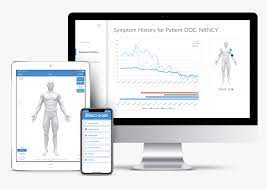Remote patient monitoring (RPM) is a kind of healthcare delivery which uses technology to monitor patient reputation outside standard medical settings. RPM has got the potential to transform healthcare by enhancing affected individual results, decreasing health-related costs, and improving patient fulfillment. With the aid of RPM, medical professionals are able to from another location keep an eye on patient health and intervene when necessary, ultimately causing far better overall health outcomes. In this post, we will investigate how RPM works, its advantages, problems linked to its setup, along with the long term leads on this terrain-splitting healthcare technologies.
How RPM Performs:
RTM monitoring works by utilizing modern technology to collect info on patient health that may then be reviewed by medical professionals. RPM gadgets include wearable products, implants, and devices that transfer details to health care suppliers. These data are then assessed employing algorithms that establish any changes in a patient’s health. In certain situations, medical professionals are able to use this info to prescribe medicine or offer a health-related intervention. Remote control checking also allows medical professionals to follow on sufferers in actual-time, trying to keep them well informed of the needed modifications in their health.
Advantages of RPM:
RPM has an important role in enhancing affected individual benefits by finding early on signals of medical conditions that could lead to unfavorable health care outcomes. By way of example, RPM can find pre-diagnosis signs of persistent circumstances including diabetes mellitus, high blood pressure levels, and cardiovascular disease. Furthermore, it allows medical professionals to observe sufferers who need specialized treatment, including constant ache control. RPM is shown to minimize healthcare facility admissions, readmission rates, and emergency section sessions as it enables medical treatment to become offered at the very first possible opportunity. Individuals who incorporate RPM to their health care regimen have documented better standard of living and elevated satisfaction because of their medical treatment.
Obstacles of RPM:
Remote patient monitoring provides several execution obstacles. Deficiency of standardization is actually a crucial struggle in RPM setup. There are actually no established rules for determining the achievements of RPM. Consequently, some health-related companies may find it hard to decide its effectiveness. One more problem is the fee for RPM and technology infrastructure. The modern technology employed in RPM is costly, and in many cases, less prosperous patients might find it hard to gain access to this technologies. Patients should also be prepared and competent at using this technology to get into medical care, which is not always possible for those without the proper laptop or computer expertise or access to the internet. In addition, cross-edge affected person information managing presents an additional challenge, needing increased structure or next-party service providers.
Future of RPM:
RPM is definitely an rising technological innovation that keeps excellent promise to the medical care system. In times when extended distance and restricted use of health-related establishments is substantial, RPM is essential in providing attention to people in distant spots. In the future, RPM will never only identify illness and also keep an eye on sufferers within the comfort of their houses or their recommended spots. The progress of AI-operated examination of information from RPM will also make it possible for greater diagnoses and prediction of patients’ overall health effects, for this reason opening up much more prospects for personalized healthcare.
To put it briefly:
Remote patient monitoring is actually a ground-splitting healthcare delivery method, empowering medical professionals to remotely monitor patients’ health insurance and get involved when needed. RPM is beneficial in reducing medical care costs, raising individual fulfillment, and increasing affected person health-related effects. When RPM execution has obstacles, like the price and absence of standardization, the longer term leads offer fantastic possibility of enhancing the health care industry in the foreseeable future. With the promising technological innovation of AI-operated examination of patients’ info, RPM provides much better diagnoses and care to sufferers. RPM provides the possible ways to affect the health care industry and present a greater healthcare method for those.



